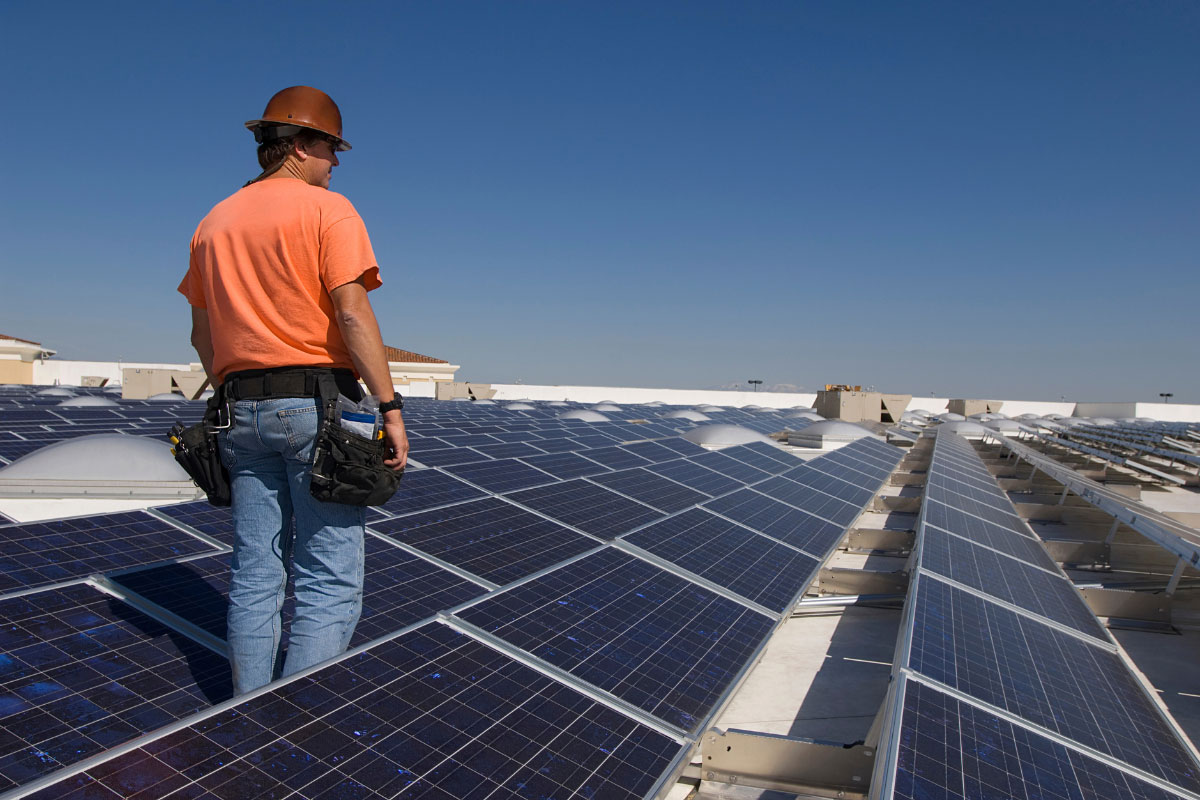For the first half of 2021, the latest FERC & EIA data show: renewables are 91.6% of new U.S Generating capacity.
Washington DC – According to a review by the SUN DAY Campaign of data recently released by the Federal Energy Regulatory Commission (FERC) and the U.S. Energy Information Administration (EIA), renewable energy sources (i.e., biomass, geothermal, hydropower, solar, wind) dominated new U.S. electrical generating capacity additions and increased their contribution to the nation’s electrical production in the first half of 2021. [1]
Key Findings from FERC:
FERC’s latest monthly “Energy Infrastructure Update” report (with data through June 30, 2021) reveals that renewable energy sources accounted for 91.6% – or 10,940 megawatts (MW) – of the 11,940 MW of new capacity added during the first six months of the year. Wind led the capacity additions with 5,617 MW, followed closely by solar (5,279 MW). Further, wind and solar were the only sources of new capacity additions in June 2021.
Renewables now provide more than a quarter (25.1%) of total U.S. available installed generating capacity. A year ago, their share was only 23.0%. Wind is now more than a tenth (10.4%) of the nation’s generating capacity while utility-scale solar is nearly five percent (4.9%) … and that does not include distributed (e.g., rooftop) solar. [2]
Moreover, FERC data suggest that renewables’ share of generating capacity is on track to increase significantly over the next three years (i.e., by June 2024). “High probability” generation capacity additions for wind, minus anticipated retirements, reflect a projected net increase of 21,129 MW while solar is foreseen growing by 44,385 MW. By comparison, net growth for natural gas will be only 13,241 MW. Thus, wind and solar combined are forecast to provide roughly five times more new net generating capacity than natural gas over the next three years.
If these numbers materialize, by June 2024, renewable energy generating capacity should account for almost 30 percent (29.4%) of the nation’s total available installed generating capacity.
Key Findings from EIA:
The latest issue of EIA’s “Electric Power Monthly” (with data through June 30, 2021) reveals that solar and wind both continued their rapid growth.
For the period January – June, solar-generated electricity – including distributed solar – expanded by 25.3% (compared to the same period in 2020) and provided nearly 4.1% of the nation’s total. Wind grew by 10.0% and accounted for more than 9.6% of total generation.
Combined, net electrical generation by wind and solar is 14.1% greater than a year ago and provided a bit more than 13.7% – or almost one-seventh – of total U.S. electrical production during the first six months of 2021. Together with generation by hydropower, biomass, and geothermal, overall production by renewables grew by 3.0% and provided 22.4% of total U.S. electrical output.
Moreover, renewables produced 2.2% more electricity than coal through June 2021 and expanded their lead over nuclear power. In fact, during the first half of this year, renewables outperformed nuclear power by 16.4%.
“FERC’s and EIA’s mid-year data confirm that renewables have now moved into second place – behind only natural gas – in terms of both generating capacity and actual electrical generation,” noted Ken Bossong, Executive Director of the SUN DAY Campaign. “And their continued, strong growth – especially by solar and wind – suggest that the best is yet to come.”
# # # # # # # # #
[1] Capacity is not the same as actual generation. Capacity factors for nuclear power and fossil fuels tend to be higher than those for most renewables. Thus, during the first half of 2021, EIA reported that renewables accounted for 22.4% of the nation’s total electrical generation – that is, somewhat less than what FERC reports was their share (25.1%) of installed generating capacity for the same period.
[2] FERC generally only reports data for utility-scale facilities (i.e., those rated 1-MW or greater) and therefore its data do not reflect the capacity of distributed renewables, notably rooftop solar PV which – according to the EIA – accounts for about 30% of the nation’s electrical generation by solar. That would suggest that the total of distributed and utility-scale solar capacity combined may be 40% or more than the solar capacity of 4.93% reported by FERC — i.e., closer to 7%.











Comments